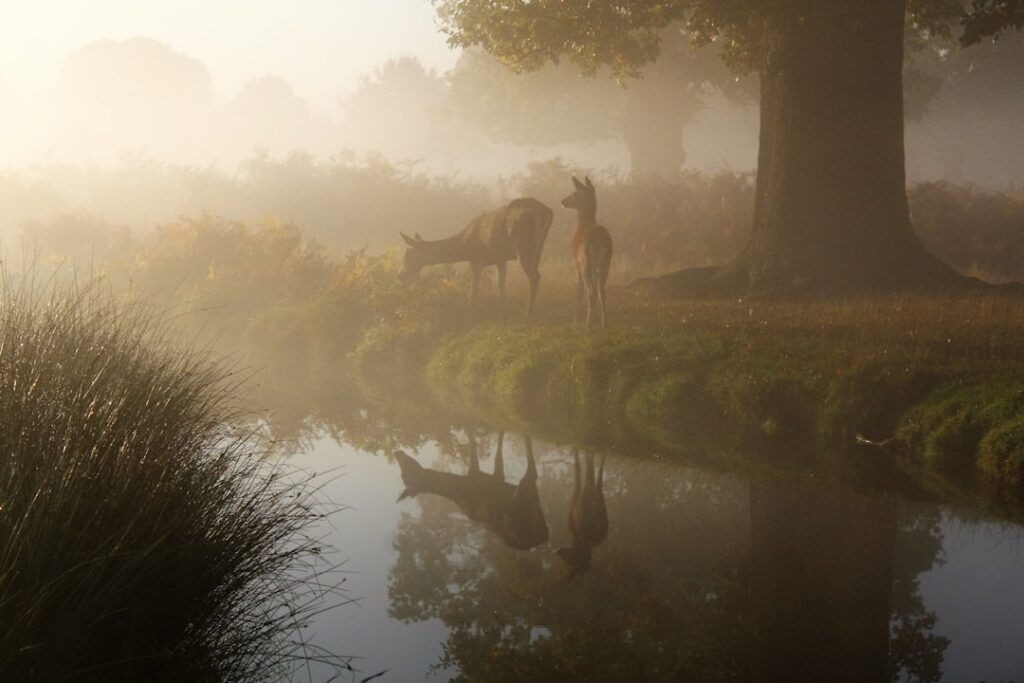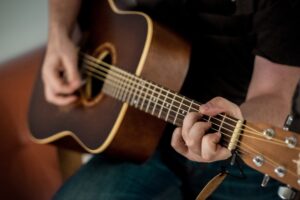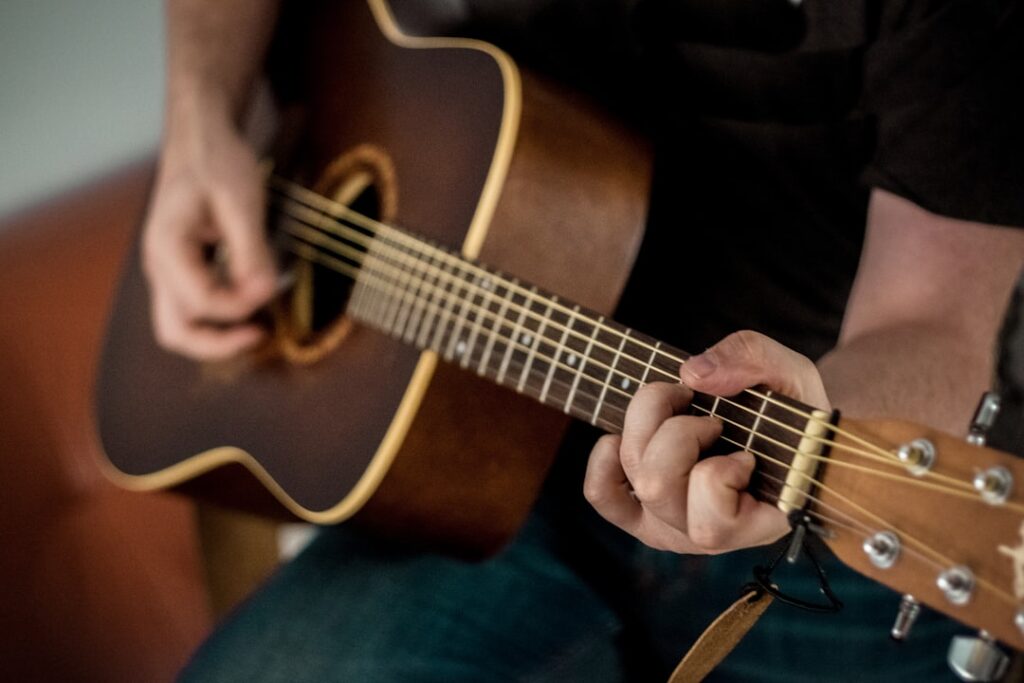Deer anatomy is crucial for hunters to understand in order to make ethical and effective shots. The vital organs of a deer are located in the chest cavity, including the heart and lungs. These organs are the primary targets for a quick and humane kill. The heart is located just behind the front legs, while the lungs fill the chest cavity and extend up into the neck area. Additionally, the liver is located in the lower portion of the chest cavity, and a shot to this area can also be effective in bringing down a deer. Understanding the location and size of these vital organs is essential for proper shot placement.
In addition to vital organs, it’s important to understand the skeletal structure of a deer. The shoulder blade, or scapula, is a thick bone that protects the chest cavity. A shot that hits this bone can result in a non-lethal hit, as it can deflect bullets or arrows. It’s crucial for hunters to be aware of this bone and aim for areas where it is not present in order to ensure a clean kill. Understanding the anatomy of a deer is essential for ethical and effective hunting, as it allows hunters to make informed decisions about shot placement.
Key Takeaways
- Understanding deer anatomy is crucial for successful shot placement
- Proper shot placement is important for ethical and humane hunting
- Factors to consider when choosing shot placement include distance, angle, and deer behavior
- Optimal shot placement varies for different hunting situations such as hunting from a tree stand or ground blind
- Bow hunters should aim for the vital organs and avoid shoulder bones for a clean kill
- Rifle hunters should aim for the heart and lungs for a quick and ethical kill
- Tips for tracking and recovering a deer include waiting before tracking, marking blood trails, and using a grid search pattern
Importance of Proper Shot Placement
Proper shot placement is crucial for ethical hunting and ensuring a quick and humane kill. A well-placed shot can result in a clean kill, minimizing suffering for the animal. On the other hand, a poorly placed shot can lead to a wounded animal that may suffer needlessly. Additionally, proper shot placement can also affect the quality of the meat, as a quick kill reduces stress and adrenaline in the animal, resulting in better-tasting meat. Furthermore, ethical hunting practices promote respect for the animal and the environment, and proper shot placement is a key component of this.
In addition to ethical considerations, proper shot placement is also important for practical reasons. A well-placed shot increases the likelihood of a quick and successful kill, reducing the chances of a wounded animal escaping and becoming lost. This not only ensures a more efficient hunt but also reduces the risk of an injured animal suffering in the wild. Proper shot placement is essential for ethical hunting practices and is a responsibility that all hunters should take seriously.
Factors to Consider When Choosing Shot Placement
When choosing shot placement, there are several factors that hunters should consider. The angle of the shot is an important consideration, as it can affect the trajectory of the bullet or arrow and the likelihood of hitting vital organs. A broadside shot, where the deer is facing perpendicular to the hunter, offers the best opportunity for hitting vital organs such as the heart and lungs. On the other hand, quartering shots, where the deer is facing at an angle to the hunter, require careful consideration of shot placement to ensure a clean kill.
The distance to the target is another important factor to consider when choosing shot placement. Longer distances can affect accuracy and require adjustments to compensate for bullet drop or arrow trajectory. Hunters should be mindful of their shooting abilities and choose shot placements that they are confident in making at various distances. Additionally, environmental factors such as wind and terrain should also be taken into account when choosing shot placement. These factors can affect the flight path of bullets and arrows, making it important for hunters to assess these conditions before taking a shot.
Optimal Shot Placement for Different Hunting Situations
| Hunting Situation | Optimal Shot Placement |
|---|---|
| Deer Hunting | Heart/lung area behind the shoulder |
| Bear Hunting | Vital area near the front shoulder |
| Elk Hunting | Heart/lung area behind the shoulder |
| Wild Boar Hunting | Heart/lung area behind the shoulder |
The optimal shot placement for different hunting situations can vary depending on factors such as the angle of the shot and the distance to the target. For broadside shots, where the deer is facing perpendicular to the hunter, the ideal shot placement is behind the front shoulder, aiming for the heart and lungs. This provides a large target area and increases the likelihood of hitting vital organs for a quick and humane kill. For quartering shots, where the deer is facing at an angle to the hunter, the ideal shot placement is slightly forward of the shoulder on the side closest to the hunter. This allows for penetration into the chest cavity to reach vital organs.
In situations where a deer is facing directly towards or away from the hunter, shot placement becomes more challenging. For head-on shots, aiming for the lower portion of the neck can be effective in reaching vital organs such as the heart and lungs. For rear shots, aiming for the lower portion of the spine can result in a quick kill by severing the spinal cord. Understanding optimal shot placement for different hunting situations is essential for hunters to make ethical and effective shots in various scenarios.
Shot Placement for Bow Hunters
Bow hunters face unique challenges when it comes to shot placement due to the limited range and penetration capabilities of arrows compared to bullets. For bow hunters, shot placement is crucial for ensuring a quick and ethical kill. The ideal shot placement for bow hunters is behind the front shoulder, aiming for the heart and lungs. This provides a large target area and increases the likelihood of hitting vital organs for a clean kill. Additionally, bow hunters should aim for broadside shots whenever possible to maximize their chances of hitting vital organs.
In situations where quartering shots are presented, bow hunters should aim slightly forward of the shoulder on the side closest to them to ensure penetration into the chest cavity. It’s important for bow hunters to consider arrow trajectory and penetration capabilities when choosing shot placement to ensure an ethical and effective kill. Additionally, bow hunters should be mindful of their shooting abilities and only take shots that they are confident in making at various distances.
Shot Placement for Rifle Hunters

Rifle hunters have greater range and penetration capabilities compared to bow hunters, allowing for different shot placement options. For broadside shots, rifle hunters should aim behind the front shoulder, targeting vital organs such as the heart and lungs for a quick and humane kill. The high velocity and penetration power of bullets make this shot placement effective in bringing down a deer efficiently. Additionally, rifle hunters should be mindful of their shooting abilities and choose shot placements that they are confident in making at various distances.
In situations where quartering shots are presented, rifle hunters should aim slightly forward of the shoulder on the side closest to them to ensure penetration into the chest cavity. The high velocity and penetration power of bullets make this shot placement effective in reaching vital organs for a clean kill. Rifle hunters should also consider environmental factors such as wind and terrain when choosing shot placement to ensure accuracy and effectiveness.
Tips for Tracking and Recovering a Deer
After making a successful shot, tracking and recovering a deer is an important part of ethical hunting practices. Hunters should wait for a sufficient amount of time before beginning to track a deer after making a shot to allow it time to expire. This reduces the risk of pushing a wounded deer further away and makes tracking easier. Additionally, hunters should look for signs such as blood trails, hair, or tracks to follow in order to locate a downed deer.
When tracking a deer, it’s important for hunters to move quietly and cautiously to avoid spooking wounded animals or pushing them further away. Paying attention to blood color, consistency, and quantity can provide valuable information about where a deer was hit and how severe its injuries are. Once a downed deer is located, hunters should approach cautiously to ensure that it is no longer alive before approaching it.
In conclusion, understanding deer anatomy and proper shot placement are essential for ethical hunting practices. Hunters should consider factors such as angle, distance, and environmental conditions when choosing shot placement in different hunting situations. Whether using a bow or rifle, hunters should aim for vital organs such as the heart and lungs for quick and humane kills. Additionally, tracking and recovering a deer after making a successful shot is an important part of ethical hunting practices that all hunters should take seriously. By understanding these principles and practicing responsible hunting techniques, hunters can ensure ethical kills and minimize suffering for animals in their pursuit of game.
Check out this informative article on deer shot placement chart from Magic Star Media. The article provides valuable insights and tips on how to effectively place your shot when hunting deer. Whether you’re a seasoned hunter or just starting out, this article offers comprehensive guidance to help you make the most of your hunting experience. Click here to read the full article and enhance your hunting skills.
FAQs
What is a deer shot placement chart?
A deer shot placement chart is a visual guide that shows the recommended areas to aim for when hunting deer in order to make a clean and ethical kill.
Why is a deer shot placement chart important?
A deer shot placement chart is important because it helps hunters to make ethical and effective shots, ensuring a quick and humane kill while also minimizing suffering for the animal.
What are the key areas on a deer shot placement chart?
Key areas on a deer shot placement chart typically include the heart, lungs, and vital organs. These are the areas that hunters should aim for to ensure a quick and ethical kill.
How can hunters use a deer shot placement chart effectively?
Hunters can use a deer shot placement chart effectively by studying and familiarizing themselves with the recommended shot placement areas, and then using this knowledge to make accurate and ethical shots when hunting deer.
Are there different deer shot placement charts for different types of firearms?
While the basic principles of shot placement remain the same, there may be slight variations in shot placement recommendations for different types of firearms, such as rifles, shotguns, or bows. It’s important for hunters to be familiar with the specific recommendations for the type of firearm they are using.






